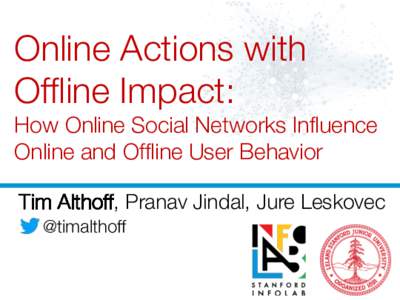<--- Back to Details
| First Page | Document Content | |
|---|---|---|
 Date: 2017-02-08 11:57:58Stanford University Social networking service Causes Homophily Technology Human behavior California |
Add to Reading List |
| First Page | Document Content | |
|---|---|---|
 Date: 2017-02-08 11:57:58Stanford University Social networking service Causes Homophily Technology Human behavior California |
Add to Reading List |